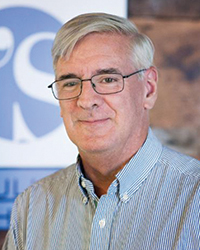
These are uncertain times for the home building industry. We have the threat of tariffs mixed with high interest rates and lenders nervous about the market. Every professional, whether builder, broker, or architect, asks themselves, how do we manage our business in today’s climate? We all strive not just to succeed, but to find fulfillment through our work. For architects like me, that fulfillment comes from designing homes, buildings, and communities that meet people’s physical and emotional needs. But today, we must do so in an environment where national housing data paints a sobering picture, and regional challenges compound the pressure. Sometimes as an architect, I feel there are forces which are beyond my control.
We have a market caught in a pause due to several factors. Recent figures from HUD highlight a troubling slowdown in construction activity. As of May 2025, single-family housing starts remain flat, and multifamily starts have dropped by nearly 30% compared to last year. This is not a small dip — it’s a clear signal of industry hesitation. In the Northeast, the story is similar: permits are down 17.2%, reflecting a real shift in developer and homeowner sentiment.
Further adding to this climate, the National Association of Home Builders recently reported that 40% of their members nationwide have lowered prices on new homes — indicating slower sales and growing inventories. Builders are understandably cautious. Between rising interest rates and fluctuating material costs, launching new projects has become more of a gamble than a growth strategy.
The only bright aspect of the home building segment is remodeling. It has seen an increase and with our local housing stock aging, there are opportunities for upgrades, renovations and additions.
What does this mean for architecture? I feel it’s a call for adaptation rather than retreat. We often think of architecture as something driven by vision — and it is. But good architecture is also deeply pragmatic. It responds to context, to constraints, and most importantly, to the needs of the client. Today, the need is different than it was two or three years ago. We’re not designing for a hot housing boom; we’re designing for a market in a holding pattern, where projects must be smarter, more cost-effective, and more attuned to long-term value. This moment is challenging, but it’s also an opportunity for architects to demonstrate the strategic value we bring. A thoughtfully designed building, after all, can mitigate cost overrun risks, increase flexibility for different uses, and improve long-term maintenance and energy efficiency. In other words, architecture can become a form of economic resilience.
In our immediate area, we’re seeing these national trends play out in uniquely local ways. The high cost of land, labor shortages, and aging housing stock continue to influence the decisions of developers and homeowners alike. While interest in dense urban housing and transit-oriented developments remains strong, financing remains a barrier — especially for multifamily projects. The recent challenge is an acute shortage of workers as immigrants, who make up a large portion of the local workforce, are not showing up to sites due to fear.
For architecture firms like ours, this has meant shifting focus. We’ve seen increased interest in renovation and adaptive reuse, where clients can extract value from what they already own, rather than taking on the risk of new construction. We’re also seeing more use of tax credits and incentive programs at the local and state level. We also see projects broken into smaller, more manageable pieces that can be scaled over time as funding and market conditions allow. There are still opportunities in this smaller project renovation market.
So how do we manage our businesses in this environment? We lean into knowledge, clear communication, managed expectations, and creative problem-solving. We help clients make informed decisions, not just about design, but about strategy. And we continue to advocate for smart development practices that can outlast short-term market conditions. Economic cycles are inevitable. Architecture is a long game. If we stay grounded in the realities of today while designing for the possibilities of tomorrow, we not only survive these times, but we also help shape what comes next.
David O’Sullivan, AIA, is the president of O’Sullivan Architects, Inc., Reading, Mass.








